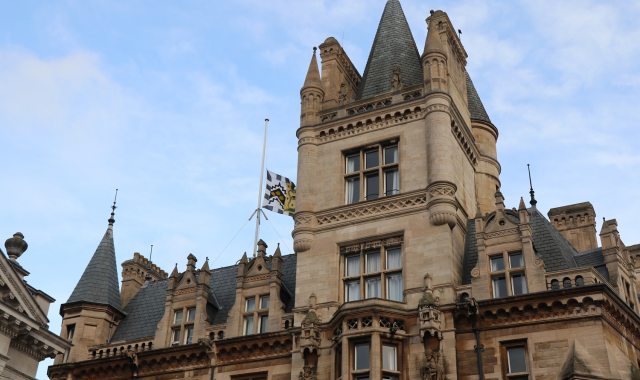Architecture
Cambridge is home to some of the finest buildings in the country, including the work of great architects such as Christopher Wren, James Stirling, Edward Cullinan and Michael Hopkins. Teaching for the academic course is carried out through lectures and supervisions (small group classes in which you can discuss your work in depth with teaching staff on a weekly basis) and is ranked among the best nationally. We have an outstanding record of graduate achievement.
Architecture combines the intellectual challenge of a Cambridge degree with the opportunity for creative design. The course in Architecture differs from most other subjects in two respects. Firstly, there is a design component, which carries a weighting of sixty per cent of the grade. The design component requires competence in organising space and in constructional issues, good judgment and powers of interpretation. Secondly, the written portion of the course (which accounts for forty per cent of the grade and is assessed by coursework and examinations) bridges the gap between the sciences and the humanities, with a group of papers on both the technical aspects of architecture and on history and theory. Additionally, there is a dissertation written in the third year, of about thirty pages in length, whose subject is chosen by the student. The College is therefore looking for candidates who will be comfortable working in this broad range of disciplines. Successful completion of the Cambridge undergraduate course in architecture results in the award of RIBA/ARB Part 1, your first stage in qualifying as an architect.
Architecture at Caius
We provide an ideal base while you study Architecture. Caius is located right at the centre of Cambridge and it has some of the most beautiful buildings in the city. We usually admit around three students each year and this provides a high level of individual attention and support, forging a close relationship between students studying the subject in their first, second and third years. It also offers the opportunity of living and working in a very interdisciplinary environment. Dr Timothy Brittain-Catlin is the Director of Studies in Architecture at Caius.
Teaching Fellows
Admissions
The Department of Architecture assumes that incoming students have little, if any, background in the subject, and the teaching includes sessions on basic skills as well as on topics for examination. As there is no A-Level course in Architecture, we welcome applicants with backgrounds in either or both the sciences and the humanities. The ability to draw and an interest in the history of art and architecture are essential, as is a knowledge of mathematics to at least a good GCSE standard. Please note that Art tends to provide a better preparation for our course than Design and Technology.
We place considerable importance in our teaching on the integration of spatial awareness with a growing knowledge of the history of architecture and the cultural richness of architectural practice. The capacity to use your skills for the purposes of interpretation and judgment in a three–dimensional milieu is extremely important. To a certain extent this is an aptitude or a talent, but it can be cultivated through instruction while at the University. Because it is fundamental to success in the course, it is one of the key areas of assessment for any candidate.
All candidates should submit 6 A4 pages of their own work soon after making their application. This should be in PDF format, and no more than 15MB in size. The selection of images should, in part, reflect material you might bring to interview as part of your portfolio. The College would then expect interviewed candidates to bring a portfolio of recent work (a rough guideline is about 30 A4 sheets) to interview.
If you are taking A-Level Art or Design, you should also bring examples of your A-Level work including a record of your observations and studies over several months. Since architecture and gardens occur virtually everywhere, the subject-matter is limitless: the back of a pub or a jetty or a barn are potentially as revealing of human habitation as a street, a square, a domestic interior or a cathedral. Views of buildings as isolated objects should be avoided: the interest should rather tend towards settings, whether indoors or out. Similarly, editing, adapting or inventing analogous settings are all possibilities.
The main criterion is that your drawings exhibit an understanding of their subject-matter. The questions we are likely to ask you might include why did you choose this setting and what are its essential attributes? For this reason, your drawings might be supplemented with plans, details, collages, diagrams and so forth — whatever is appropriate. No particular style or medium is laid down in advance — again it is a question of fitting the mode of representation to the content of the space. It is useful to look at other representations of settings (paintings, drawings, film, stagesets, etc.), and some sources of inspiration (postcards, photographs, cutouts, etc.) ought to be included in the portfolio. Ultimately, this portfolio or collection of studies should be regarded as an opportunity to play to your strengths and interests — preliminary fragments towards the development of one’s visual culture.
You should normally expect one 40-minute interview which will be conducted by members of the Department of Architecture. This interview will take as a point of departure the interests displayed in your portfolio. We'll send more information closer to the time about any exercises that we would like you to undertake as part of the interview process.
If you have any queries about Admissions, please contact admissions@cai.cam.ac.uk.

